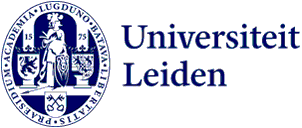Lecture
Double Lecture on Ecocritical Perspectives in Japanese Art
- Date
- Thursday 31 October 2024
- Time
- Serie
- Leiden Lecture Series in Japanese Studies
- Address
-
Lipsius
Cleveringaplaats 1
2311 BD Leiden - Room
- 2.27
Connecting pictures of mountains-and-water and pictures of birds-and-flowers: The popularization of Chinese literati culture in early nineteenth-century Japan
At the turn of the nineteenth century, an increasing number of picture books depicting idealized rural landscapes featuring mountains, streams or lakes (sansuiga) were produced. Most of these images were done in Chinese-style literati painting (nanga/bunjinga) by literati artists and ukiyo-e artists dabbling in the literati mode such as Kuwagata Keisai and Katsushika Hokusai. The images in these picture books conveyed the taste of Chinese literati culture for enjoying oneself by composing poems or painting in the tranquil countryside. In fact, these picture books include painting manuals for aspiring amateurs seeking to paint landscapes in a literati style. The spread of Chinese literati culture appears to have inspired a boom in ukiyo-e landscape prints from the 1830s onwards. This was also the time when birds-and-flowers (kachō), another important subject of literati-style paintings, emerged as a new subject in ukiyo-e.
Harking back to ancient China, the high regard in which literati culture held the enjoyment of country life and of living in nature was widely shared among intellectuals in East Asia. Although these intellectuals largely hailed from privileged social and/or intellectual backgrounds in seventeenth and eighteenth-century Japan, their backgrounds became more diverse in the nineteenth century. Literati culture and its appreciation of nature continued even after the start of the modernizing process in the Meiji Period. Considering the value of nature in literati culture can provide valuable insights for the twenty-first century.
About the speaker
Fumiko Kobayashi is Professor of Japanese Literature at Hosei University in Tokyo. She received her doctorate in Japanese literature from the University of Tokyo in 2003. Her research interests cover literature and the visual arts in eighteenth and nineteenth-century Japan. She has published several books including Henchikurin Edo Sashie-bon (Weird Illustrated Books from Edo), published by Shueisha International in 2019. In English, she recently published the chapter "Generative Interactions: The Osmotic Boundaries between Kusazōshi and Ukiyo-e" in Laura Moretti and Satō Yukiko (eds.) Graphic Narratives from Early Modern Japan. Brill, 2024.
Mapping the Unrepresentable: Disaster in Japanese Early Modern Visual Culture
This talk critically explores the artistic practices involved in visualizing disasters in early-modern Japan, focusing on the interplay between representation and unrepresentability within printed visual culture. Unlike contemporary disaster imagery, which often transforms catastrophic events into spectacles of human and natural suffering—frequently sensationalized as "disaster porn" for mass consumption—early-modern Japanese prints provide an alternative approach. Whether depicting or deliberately omitting events like earthquakes, fires, floods, and famines, they challenge the universalist logic that underpins modern "emergency imaginary" (Calhoun 2010). By mapping these visual presences and absences, the talk explores the relationships between disaster imagery and social practices. Additionally, it considers the role of non-anthropogenic factors, such as environmental history, in shaping visual culture, and how this perspective might revise understanding of art historiography.
About the speaker
Ewa Machotka is a Full Professor and Chair of East Asian Art History at the Institute of Art History, University of Zurich. An an art historian, she is mainly interested in the transcultural and transdisciplinary study of art from the perspective of Global Art History, Environmental Humanities and Digital Humanities. Machotka earned her PhD in Japanese Art History from Gakushuin University, Tokyo, in 2008, with a fellowship from the Japanese Ministry of Education. Before joining Zurich, she held positions at Stockholm University, Leiden University, and the National Museum in Krakow. Her publications include Hokusai's Hyakunin Isshu: Visual Genesis of Japanese National Identity (Peter Lang P.I.E., 2009) and Too Pretty to Throw Away: Packaging Design from Japan (Manggha Museum, 2016, with K. Cwiertka), and she co-edited Consuming Life in Post-Bubble Japan: A Transdisciplinary Perspective (Amsterdam UP, 2018, with K. Cwiertka). She is currently writing a monograph, Between Absence and Presence: Environmental Disaster in Early Modern Visual Culture of Japan, exploring the processes of visual enculturation through which disasters were constructed and managed in early modern Japan.
